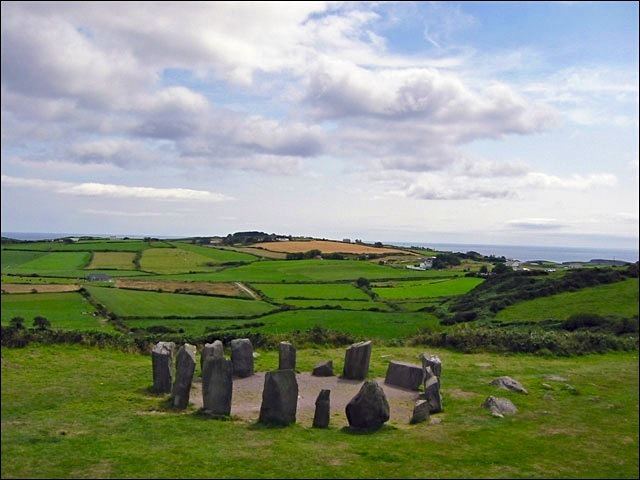Alternate name Druid's Altar Archaeologists Edward M. Fahy (1957) | Height 1.8 m | |
 | ||
Area 9.3 metres (31 ft) (diameter) Address Drombeg, West Cork, Co. Cork, Ireland Similar Stone circle, Beagh, Poulnabrone dolmen, Knocknakilla, Grange stone circle | ||
Historical drombeg stone circle ireland
Drombeg stone circle (also known as The Druid's Altar), is a Recumbent stone circle located 2.4 km (1.5 mi) east of Glandore, County Cork, Ireland. Drombeg is one of the most visited megalithic sites in Ireland and is protected under the National Monuments Act.
Contents
- Historical drombeg stone circle ireland
- Kundalini and the drombeg stone circle
- Features
- Excavations
- References
Kundalini and the drombeg stone circle
Features
The stone circle consists of seventeen closely spaced stones spanning 9.3 metres (31 ft) in diameter, of which 13 survive. The most westerly stone (1.9m long) is the long recumbent and has two egg shaped cup-marks, one with a ring around it. A "Cork-Kerry type" stone circle, it is flanked by a pair of 1.8m high axial portal stones, which provide a south-west axis, and orient the monument in the direction of the setting sun during the midwinter solstice. The stones in the circle have been shaped to slope upwards to the recumbent stone, the midpoint of which was set in line with the winter solstice sunset viewed in a conspicuous notch in the distant hills. While the alignment is good, it is not precise.
The ruins of two round stone walled conjoined prehistoric huts and a fulacht fiadh lie just 40m west of the monument. Evidence suggests the fulacht fiadh was in use up until the 5th century AD. The larger of the huts had a timber roof supported by a timber post. The smaller hut had a cooking oven on its east side. A causeway leads from the huts to the cooking place (fulacht fiadh) featuring a hearth, well and trough in which water was boiled by adding hot stones.
Excavations
Following a number of surveys in the early 1900s, the site was excavated and restored in 1957. During this process an inverted pot was found in the centre of the circle, containing the cremated remains of a young adolescent wrapped with thick cloth. Radiocarbon dating of samples taken from the site suggest that it was active c. 1100 - 800 BC. The pot was buried near the centre of the circle along with 80 other smashed sherds, four bits of shale and a collection of sweepings from a pyre.
